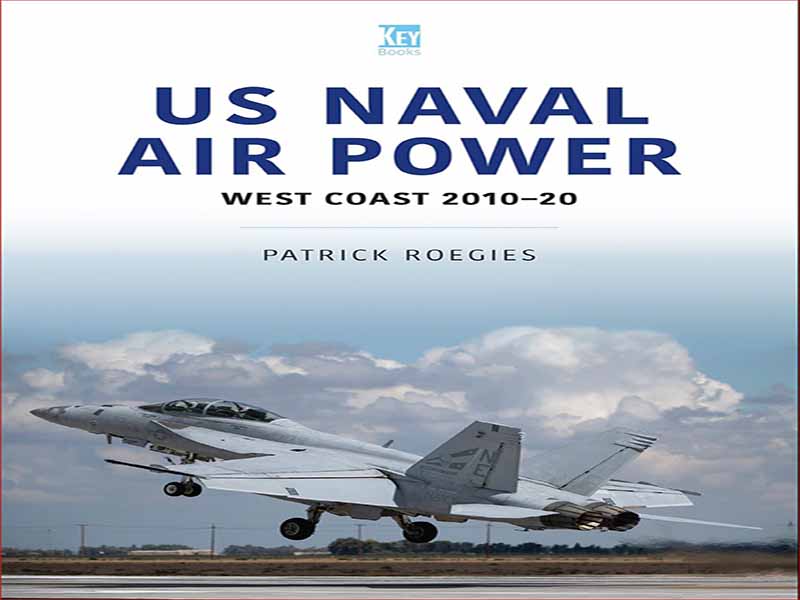- عنوان کتاب: US Naval Air Power/West Coast 2010-2020
- نویسنده/انتشارات: Patrick-Roegies
- حوزه: نیروی هوایی, نیروی دریایی, هوانوردی دریایی
- سال انتشار: 2022
- تعداد صفحه: 476
- زبان اصلی: انگلیسی
- نوع فایل: pdf
- حجم فایل: 4.89 مگابایت
هوانوردی دریایی ایالات متحده در سال 2011 قرن پرواز خود را جشن گرفت. در طول 100 سال فعالیت خود، نیروی دریایی یک جهش بزرگ در توسعه از نسل اول تا پنجم انجام داد و پوشش فناوری هوانوردی را پیش برد. از هواپیمای دوبال کورتیس که اولین فرود و برخاستن از یک کشتی نیروی دریایی را انجام می دهد تا هواپیمای مدرن امروزی با بال ثابت و چرخشی. هوانوردی دریایی داستان چشم انداز، نوآوری و پیشرفت های مستمر است. دهه گذشته مبارزات زیادی را در دنیایی در حال تغییر ارائه کرده است و فرماندهی نیروی دریایی توانسته است بر تمام چالشهای حفظ خدمات در بالای صحنه قدرت هوایی نیروی دریایی تسلط یابد. در طول ده سال گذشته، نیروی دریایی زمان و تلاش قابل توجهی را برای استانداردسازی ناوگان هواپیماهای بال ثابت و چرخشی در موجودی عملیاتی خود صرف کرد، در حالی که با دقت فناوری رادارگریز را در چارچوب توانایی های خود معرفی و پیاده سازی کرد. نیروی دریایی ایالات متحده تمام تلاش های لازم را با چشم اندازی قوی برای ادامه ارائه آمادگی رزمی انجام داد. این شامل ادغام انواع هواپیماهای جدید، توسعه انواع فرعی (از جمله ادغام سیستم های فنی و پیشرفته در انواع هواپیماهای موجود) بود. علاوه بر این، نیروی دریایی با چالشهای حفظ ناوگان موجود برای وضعیت آمادگی رزمی، برنامههای استانداردسازی و چندین برنامه افزایش عمر سرویس مقابله کرد. این کتاب پیشرفتهای نیروی هوایی نیروی دریایی در ساحل غربی را بین سالهای 2010 تا 2020 توصیف میکند. این تحولات بر تمام جنبههای این سرویس تأثیر گذاشت و شامل چالشهایی بود که با آن مواجه شدند و حل شدند، تحولات رخ داده در این دهه گذشته، و تحولات در نیروی دریایی. چرخش ایستگاه (NAS)، بال هوایی حامل (CVW) و اسکادران. سندی که توسط سپاه تفنگداران دریایی ایالات متحده نوشته شده است، چشم انداز هوانوردی دریایی 2016-2025، دو حوزه اصلی تمرکز را برای بخش های هوانوردی نیروی دریایی ایالات متحده در آینده تعریف می کند. اولین مورد به عنوان ضرورت استراتژیک برای گسترش قابلیت ها از طریق پیشرفت فناوری، به منظور ارائه قابلیت های جنگی یکپارچه (به عنوان “تعامل ترکیبی افراد، تجهیزات و آموزش برای پرتاب سلاح یا جمع آوری اطلاعات” تعریف می شود. دومی به عنوان حفظ ظرفیت تعریف می شود. ظرفیت شامل موارد زیر است: (1) ایده های ظرفیت کل، که عبارت است از “تعداد کل واحدهای سرنشین دار، آموزش دیده و مجهز برای پاسخگویی به نیازهای حضور در حالت پایدار و پاسخ به بحران”. (2) ظرفیت عملیاتی که عبارت است از تعداد و آمادگی “هواپیمای درون یک اسکادران و تعداد خدمه هوایی موجود برای عملیاتی کردن آنها” به منظور موفقیت در نبرد. مورد دوم به طور خاص به بخش هوانوردی نیروی دریایی اشاره دارد، و سند “چشم انداز” شامل یک نقشه راه در مورد چگونگی حفظ شاخص عملکرد کلیدی مطلوب 85 درصد آمادگی رزمی برای دارایی های هوانوردی است. احترام ویژه به افسران روابط عمومی ترزا مک کنریک، ملیندا لارسون، لیدیا باک، زیپ آپهام، کریستوفر هاو، و ونس واسکز از پایگاه های ساحل غربی، امکان بازدیدهای زیادی، میزبانی مصاحبه ها، و امکان جمع آوری مطالب عکاسی را فراهم کرد. همچنین، یک احترام ویژه برای LT Matthew “Abe” Gottschalk، افسر روابط عمومی VFC-13، LT Glenn Diller، افسر روابط عمومی VFA-97، LT Alex Bowman، افسر امور عمومی در VFA-41، CDR Colin “Doris” دی، و سی دی آر جیسون “چابز” فاکس از فرماندهی و کنترل هوابرد و بال لجستیک برای کمک در نوشتن این کتاب.
The United States Naval Aviation celebrated its century of flight in 2011. Within its 100 years of existence, the Navy took a major leap in development from first to fifth generation and pushed the envelope of aviation technology. From the Curtiss biplane performing its first arrested landing and take-off from a Navy vessel to today’s state-of-the-art fixed and rotary wing aircraft. Naval Aviation is a story of vision, innovation, and continuous improvements. The past decade has presented many struggles in an everchanging world, and the Navy command has managed to master all the challenges of keeping the service on top of the stage of naval air power. Over the last ten years, the Navy invested significant time and effort to standardize the fleet of both fixed and rotary wing aircraft within its operational inventory, while carefully introducing and implementing stealth technology within its capabilities. The US Navy undertook all required efforts with a strong vision to continue delivering combat readiness; this included integration of new aircraft types, development of subtypes (including integration of technological, state-of-theart systems in existing aircraft types). Furthermore, the Navy coped with the challenges of maintaining the existing fleet to combat readiness status, standardization programs, and several Service Life Extension Programs. This book describes the Naval Air Power developments on the West Coast between 2010 and 2020. These developments influenced all aspects within the service and included the challenges that were met and resolved, the developments taking place within this past decade, and the developments in Naval Air Station (NAS), Carrier Air Wing (CVW), and squadron rotations. The document written by the US Marine Corps, Naval Aviation Vision 2016−2025, defines two major fields of focus for the United States Naval Aviation departments going forward. The first is defined as the strategic imperative of expanding capabilities through technological advancement, in order to deliver integrated warfighting capabilities (defined as “the combined interaction of people, equipment and training to launch weapons or gather intelligence”). The second is defined as maintaining capacity. Capacity includes: (1) the ideas of aggregate capacity, which is the “total number of units manned, trained and equipped to meet steady-state presence and crisis-response requirements”; (2) operational capacity, which is the number and readiness of “aircraft within a squadron and the number of aircrews available to operate them” in order to succeed in combat. The latter refers more specifically to the Naval Aviation department, and the “Vision” document includes a roadmap on how to maintain the desired key performance indicator of 85 percent combat readiness for aviation assets. A special courtesy to the public affairs officers Theresa McKenrick, Melinda Larson, Lydia Bock, Zip Upham, Kristopher Haugh, and Vance Vasquez of the West Coast bases, enabling many visits, hosting interviews, and allowing the gathering of photographic material. Also, a special courtesy for LT Matthew “Abe” Gottschalk, public affairs officer of VFC-13, LT Glenn Diller, public affairs officer of VFA-97, LT Alex Bowman, public affairs officer at VFA-41, CDR Colin “Doris” Day, and CDR Jason “Chubbs” Fox of Airborne Command and Control and Logistics Wing for assisting in the composition of this book.
این کتاب را میتوانید از لینک زیر بصورت رایگان دانلود کنید:
Download: US Naval Air Power/West Coast 2010-2020
































نظرات کاربران